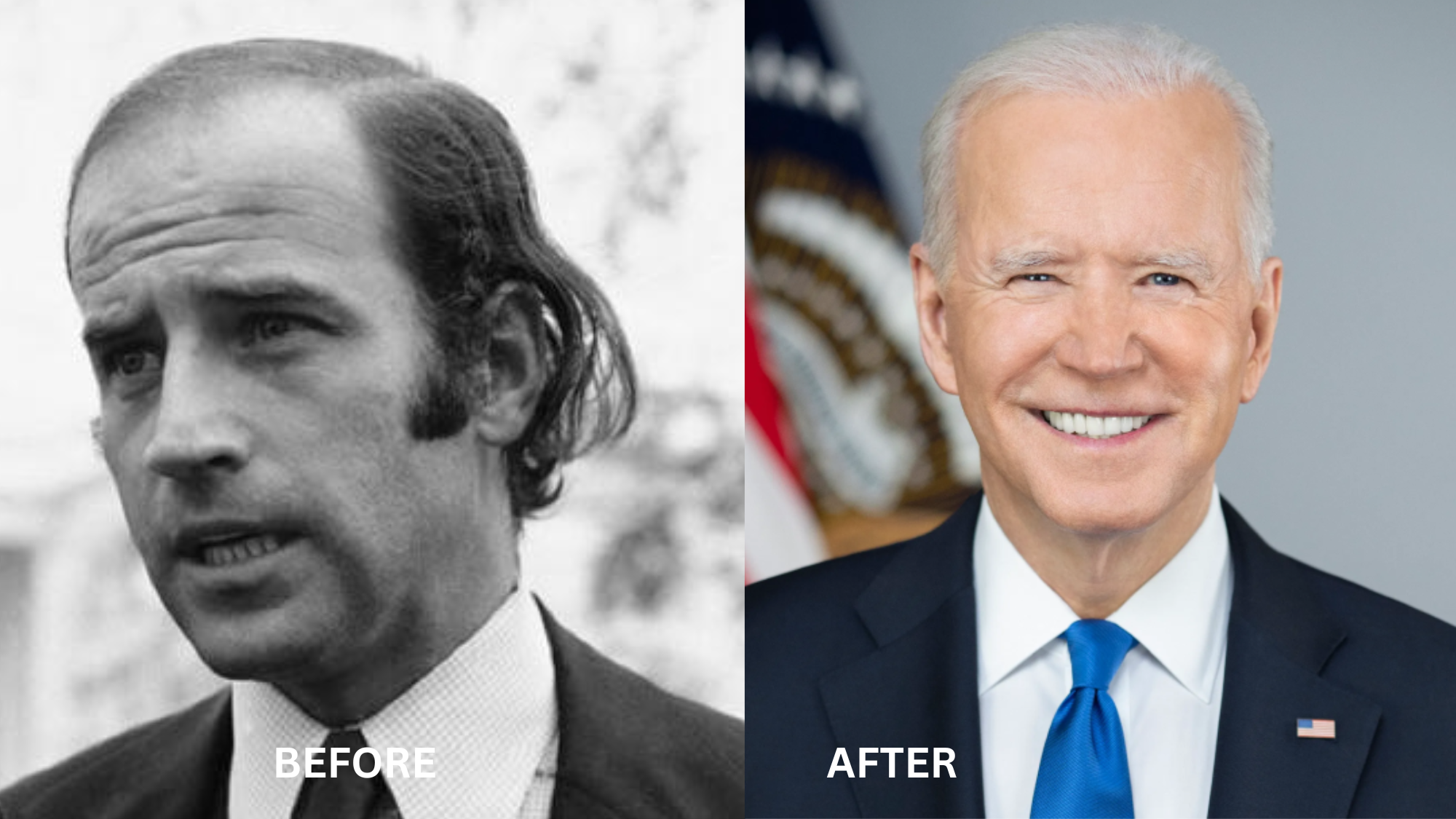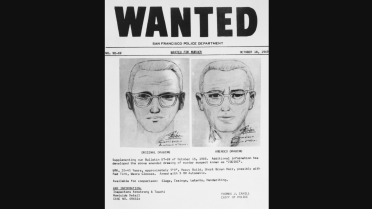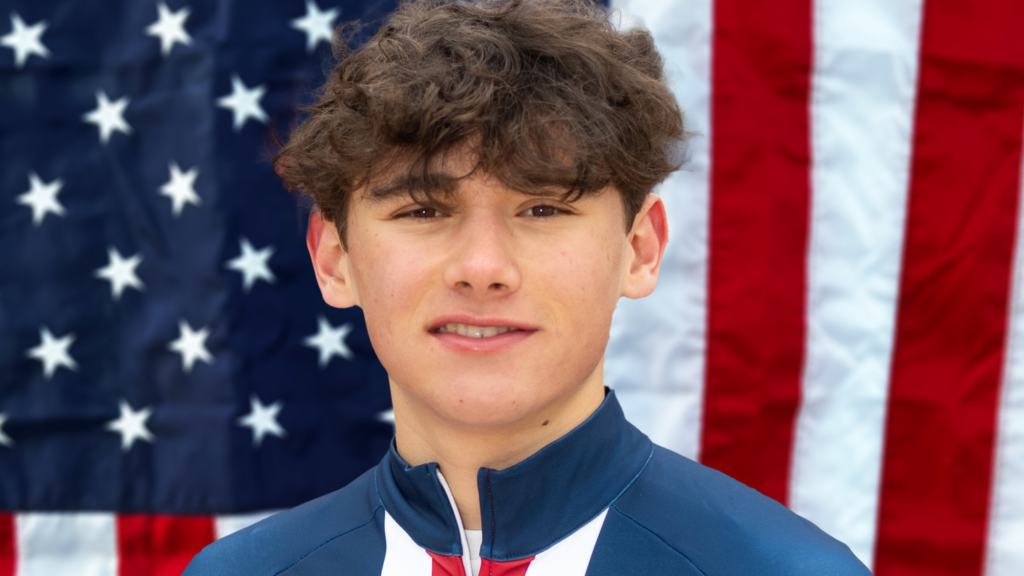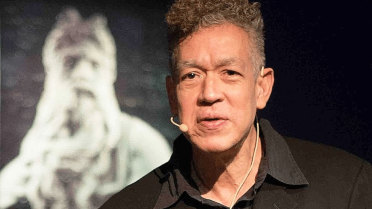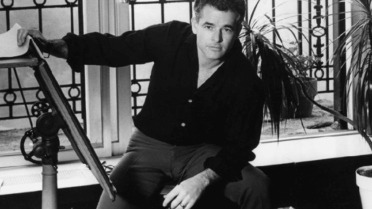Have you ever wondered how Joe Biden went from a thinning hairline in the ’70s to a full, healthy-looking head of hair today?
Well, his transition has caught a lot of attention.
Joe Biden’s hair transplant is a great example of how a well-done transplant can look completely natural and age gracefully.
What started as noticeable male pattern baldness has turned into a look that many guys would love to have.
Let’s break down how he likely made it happen, what procedures were involved, and how the results turned out so well.
Joe Biden’s Hair Development
In the 1970s and early 1980s, Joe Biden exhibited noticeable male pattern baldness, with a receding hairline, thinning on the crown, and the classic “horseshoe” pattern common in aging men.
But by the late 1980s, observers began to notice a gradual improvement in his hairline.
Over the next several years, his hair appeared fuller and more even, eventually giving the impression of a restored, natural-looking hairline by the 1990s.
The transition wasn’t abrupt, which suggests he likely underwent professional hair restoration treatments that were carefully staged to create subtle, realistic results rather than an obvious transplant.
What Hair Procedures Did Joe Biden Likely Have?
Based on expert analysis and the timeline of Biden’s transition, he most likely underwent hair transplant procedures.
There are two main types:
- FUT (Follicular Unit Transplantation): This was the gold standard during the 1980s and 1990s when Biden’s transformation occurred. It involves removing a strip of hair-bearing scalp from the back of the head and transplanting individual hair follicles to thinning areas.
- FUE (Follicular Unit Extraction): This newer technique extracts individual hair follicles one by one. It’s less invasive but wasn’t widely available during Biden’s initial procedures
Biden’s Hair Transplant Process
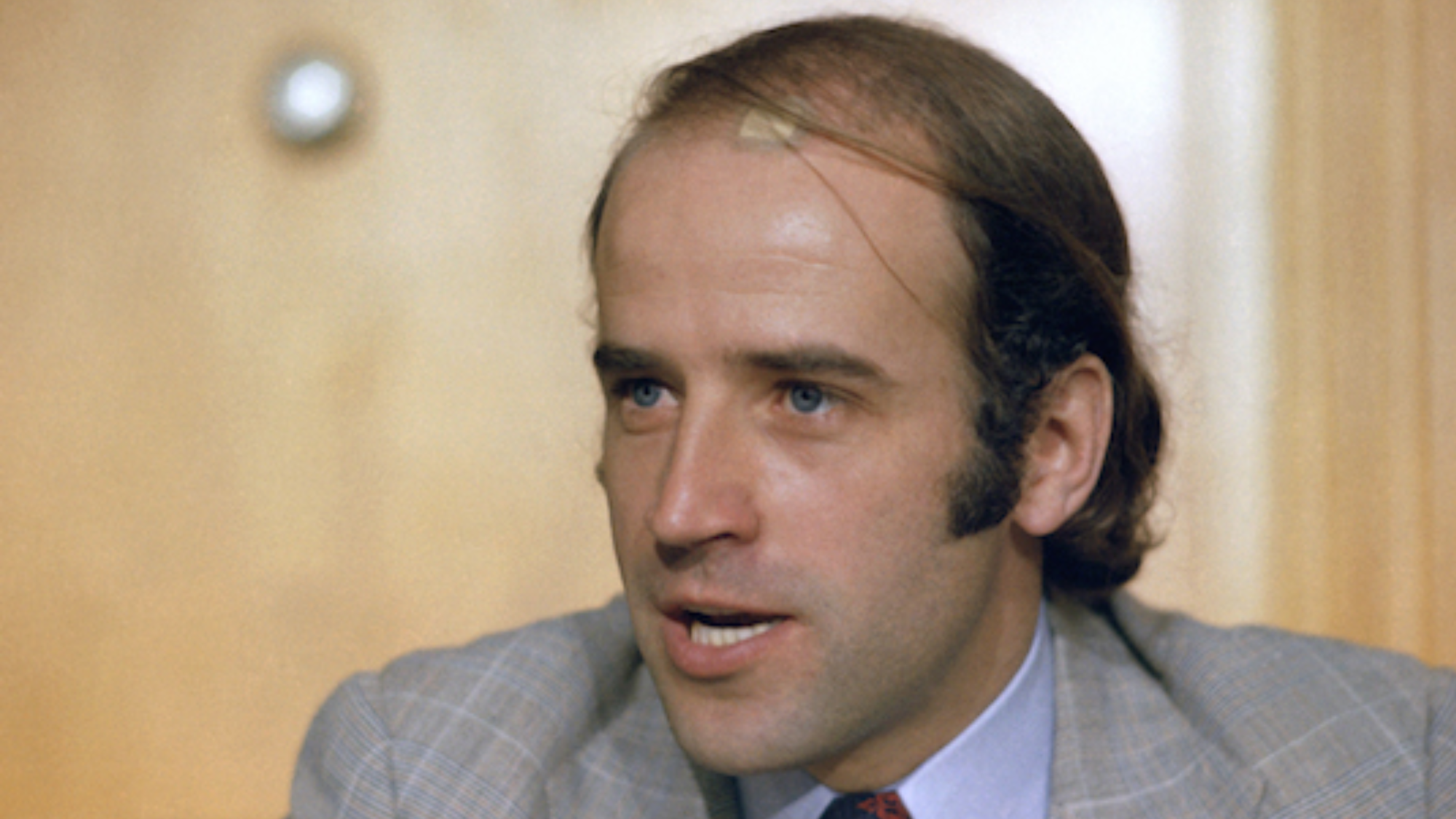
Here’s a detailed look at Biden’s entire transplant procedure:
1. Donor Area Management
The back and sides of Biden’s head would have provided the donor hair for his transplants. This area typically resists male pattern baldness, making it perfect for harvesting healthy follicles.
Surgeons would have carefully managed this donor area to ensure they didn’t over-harvest, maintaining a natural look even in the back.
2. Hairline Design
Creating a natural-looking hairline is an art form, and Biden’s surgeons clearly knew what they were doing.
His hairline isn’t too low or too straight; it follows natural patterns and has aged appropriately.
A good hairline should:
- Follow the natural muscle movements of the forehead
- Have slight irregularities
- Be age-appropriate
3. Density and Distribution
Biden’s transplant doesn’t just cover bald spots; it creates overall density that looks completely natural.
This requires strategic placement of transplanted hairs to create the illusion of fuller coverage throughout the scalp, not just in specific problem areas.
Before and After: Analyzing the Results
The transition is honestly remarkable.
Early photos show significant balding and a receding hairline, while current photos show a full head of hair with natural-looking density.
What makes this particularly impressive is that he’s now in his 80s with better hair than he had in his 30s.
Why His Transplant Succeeded?
Several factors make Biden’s hair transplant look natural:
- Gradual Transformation: No sudden, dramatic change
- Age-Appropriate Styling: He doesn’t try to look 20 years younger
- Quality Work: The hairline and density look completely natural
- Proper Maintenance: His hair has been well-cared for over the decades
One sign of excellent hair transplant work is how it ages.
Biden’s hairline has maintained its natural appearance as he’s gotten older, transitioning smoothly from dark to gray hair without looking artificial.
Conclusion
Joe Biden’s hair transition is one of the most impressive celebrity success stories.
He went from noticeable balding to a full, natural-looking head of hair that’s held up for decades.
Always remember, a good hair transplant should look natural and age well, and with the right surgeon, that’s totally possible.
Thinking about hair restoration or just finding this information interesting?
Drop your thoughts in the comments!

